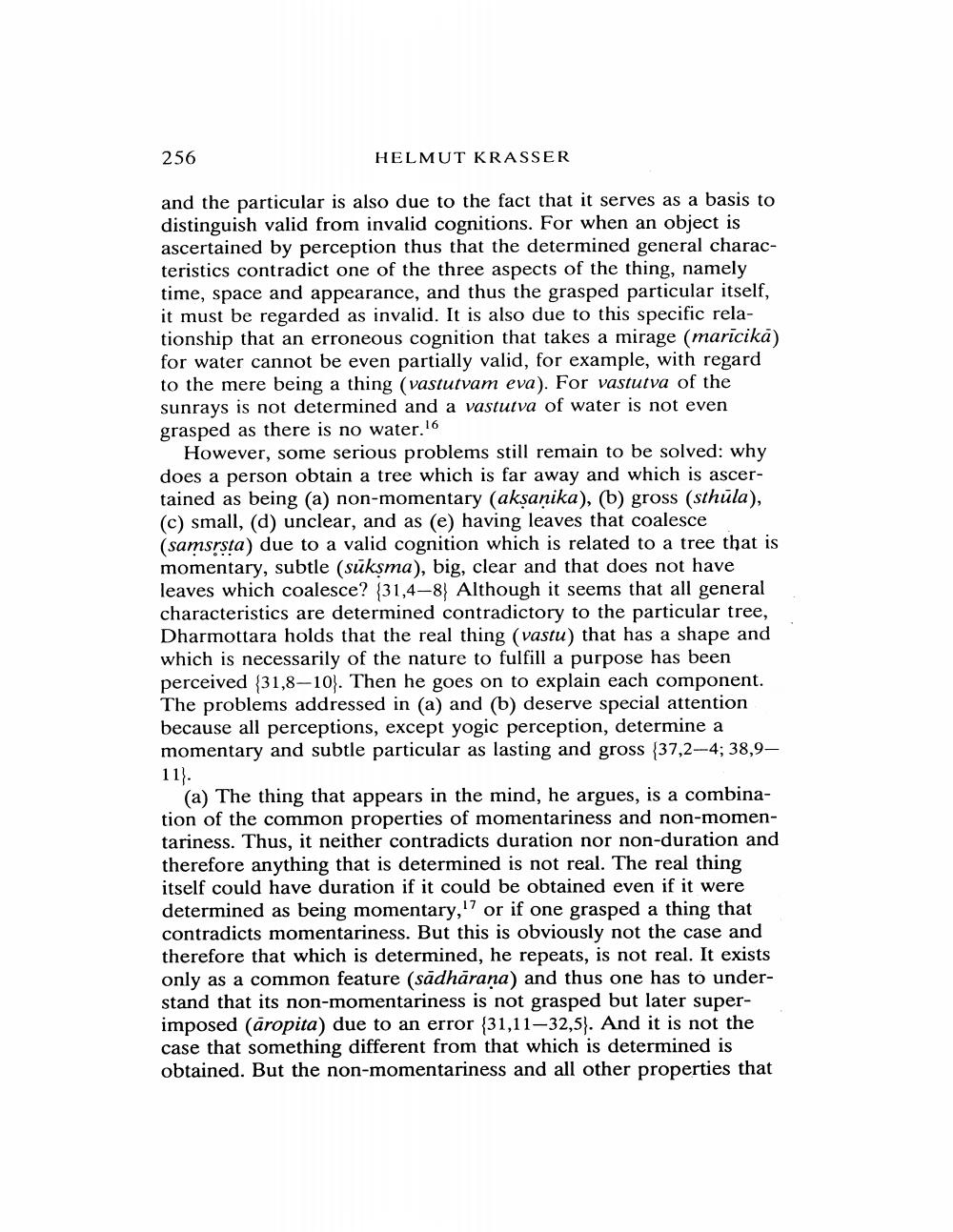________________
256
HELMUT KRASSER
and the particular is also due to the fact that it serves as a basis to distinguish valid from invalid cognitions. For when an object is ascertained by perception thus that the determined general characteristics contradict one of the three aspects of the thing, namely time, space and appearance, and thus the grasped particular itself, it must be regarded as invalid. It is also due to this specific relationship that an erroneous cognition that takes a mirage (maricikā) for water cannot be even partially valid, for example, with regard to the mere being a thing (vastutvam eva). For vastutva of the sunrays is not determined and a vastutva of water is not even grasped as there is no water.16
However, some serious problems still remain to be solved: why does a person obtain a tree which is far away and which is ascertained as being (a) non-momentary (akşanika), (b) gross (sthula), (c) small, (d) unclear, and as (e) having leaves that coalesce (samsrsta) due to a valid cognition which is related to a tree that is momentary, subtle (sükşma), big, clear and that does not have leaves which coalesce? {31,4–8) Although it seems that all general characteristics are determined contradictory to the particular tree, Dharmottara holds that the real thing (vastu) that has a shape and which is necessarily of the nature to fulfill a purpose has been perceived {31,8-10). Then he goes on to explain each component. The problems addressed in (a) and (b) deserve special attention because all perceptions, except yogic perception, determine a momentary and subtle particular as lasting and gross {37,2---4; 38,9– 11).
(a) The thing that appears in the mind, he argues, is a combination of the common properties of momentariness and non-momentariness. Thus, it neither contradicts duration nor non-duration and therefore anything that is determined is not real. The real thing itself could have duration if it could be obtained even if it were determined as being momentary,17 or if one grasped a thing that contradicts momentariness. But this is obviously not the case and therefore that which is determined, he repeats, is not real. It exists only as a common feature (sādhāraṇa) and thus one has to understand that its non-momentariness is not grasped but later superimposed (aropita) due to an error {31,11–32,5). And it is not the case that something different from that which is determined is obtained. But the non-momentariness and all other properties that




